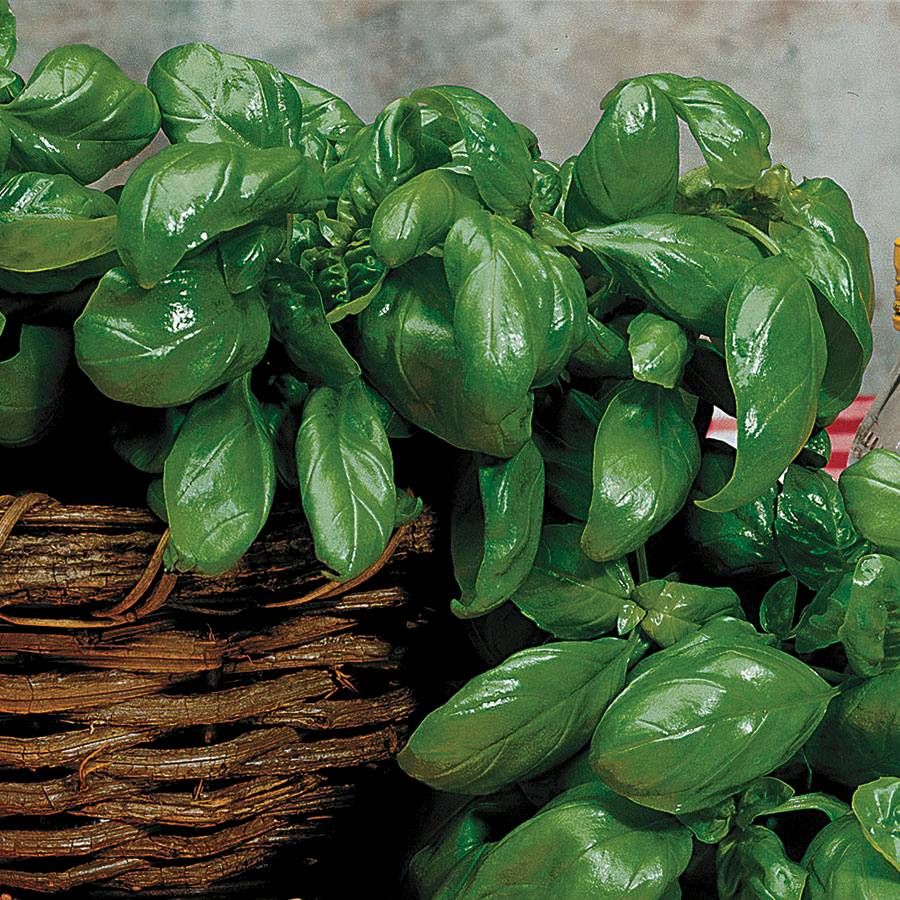How To Grow Basil Plants
Basil grows best in warm, sunny areas and benefits from consistent pruning. This just means you can enjoy its leaves all summer long!

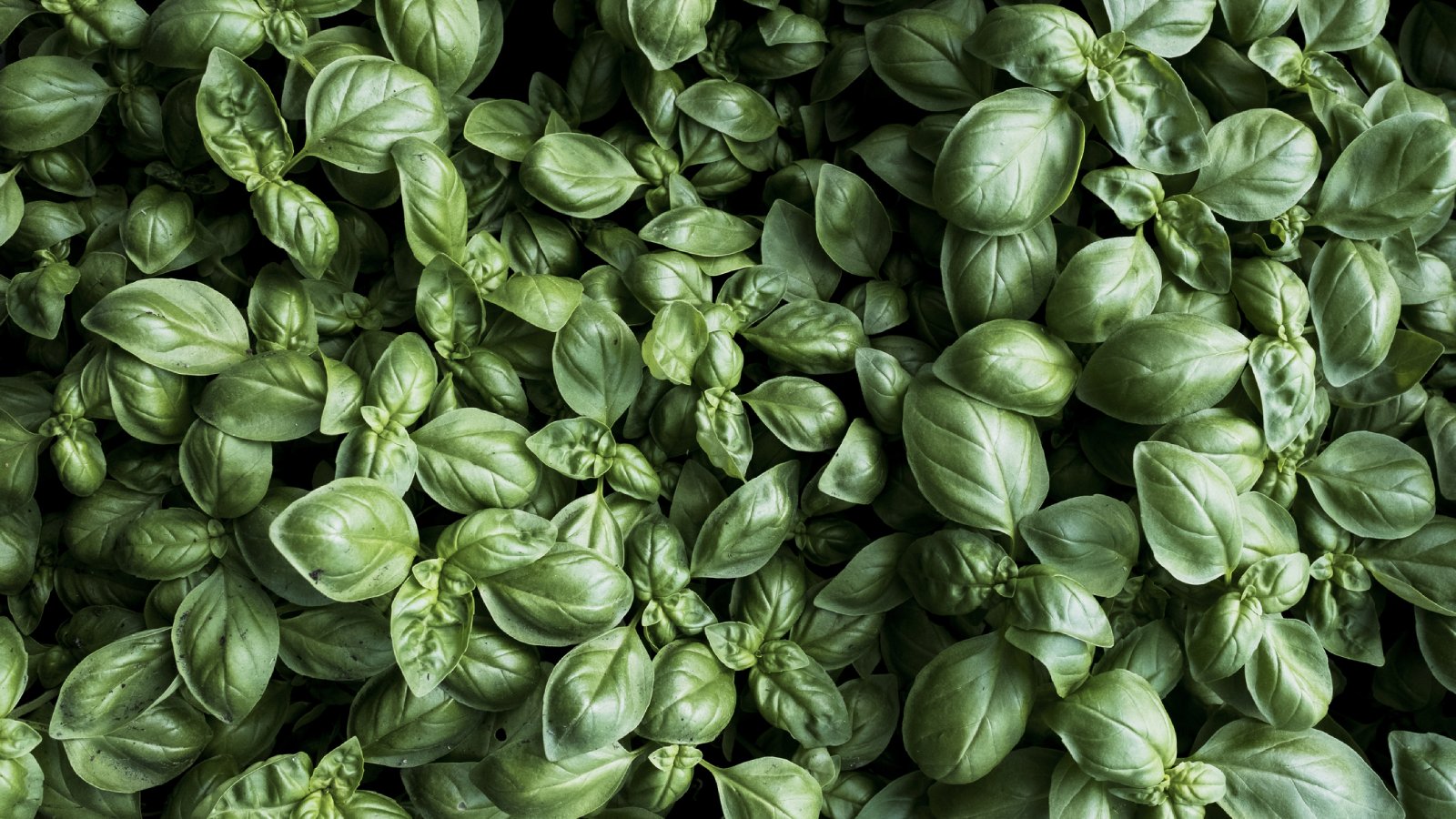
Basil Quick Facts
Botanical name: Ocimum
Height: 18-24 inches ( 46-61 cm) or up to 6 feet ( 1.8 m)
Spread: similar
Sun exposure: full
Soil requirements: well draining, rich
Hardiness zones: 3-11
When to plant: spring
Basil is a delightful aromatic herb with a subtle anise flavor that perks up a host of recipes. Whether your desire is a plate of freshly harvested tomato slices adorned with good olive oil and basil leaves, or you want to make pesto, knowing how to grow basil is the first step. The basil plant can be started from seed or cuttings. Depending on your zone, you can directly sow the seed or start it indoors 4-6 weeks before planting out the seedlings. Warm weather and plenty of sunshine is required for growing a basil plant. Plan to wait until all danger of frost has passed.
Basil Care
While we think of basil as a Mediterranean herb, it is actually native to India and Southeast Asia. There are many varieties available, but all of them prefer warm temperatures. Wondering how to grow basil? Begin with seeds, purchased starts, or rooted cuttings and prepare a rich, well draining garden bed. Then start basil plant care as outlined below.
Light
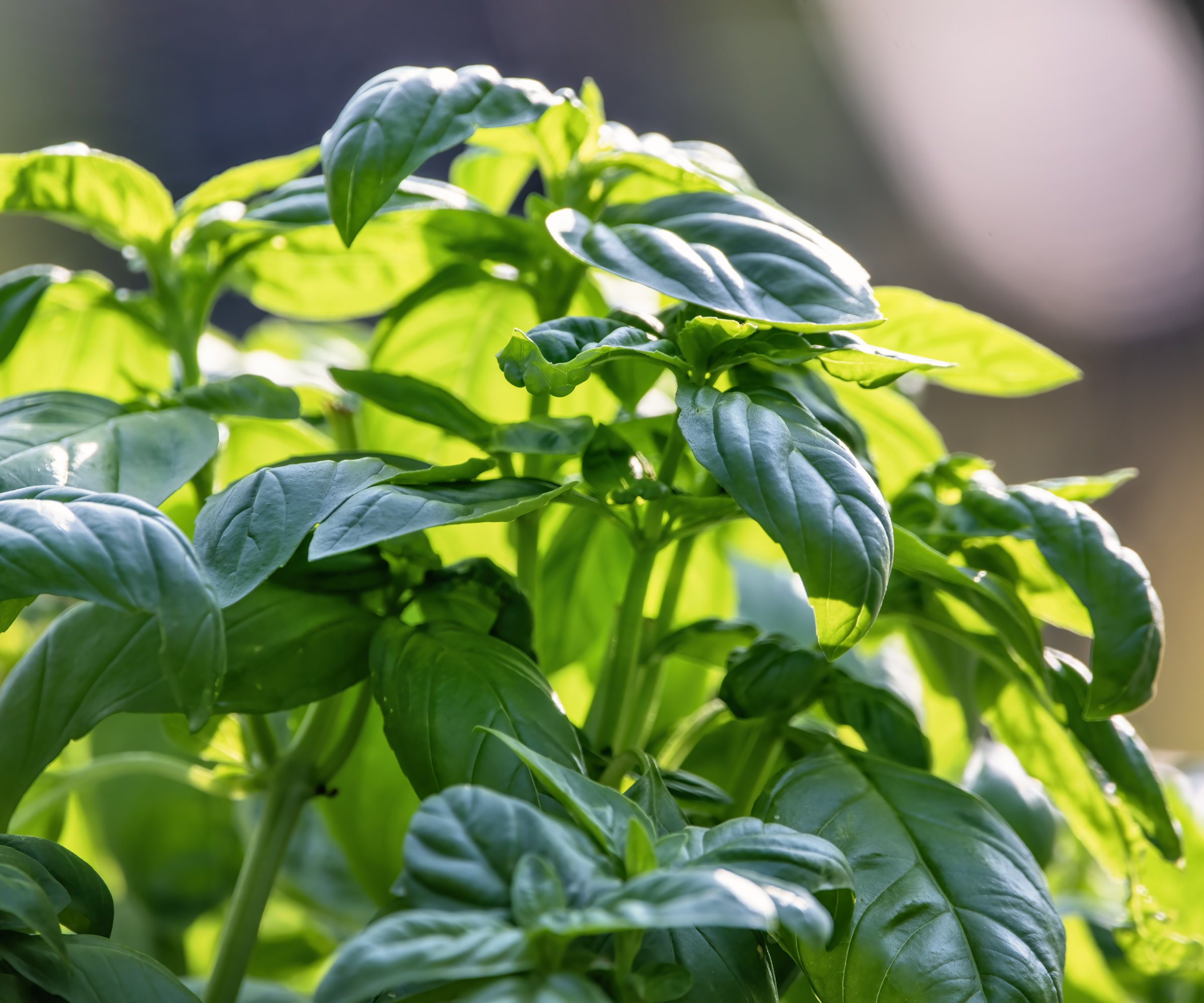
Basil is a warm season herb that prefers full sun with a little afternoon shade. Ideally it should receive 6-8 hours of sun per day. If you are growing it indoors, set a plant light for 10 hours.
Water
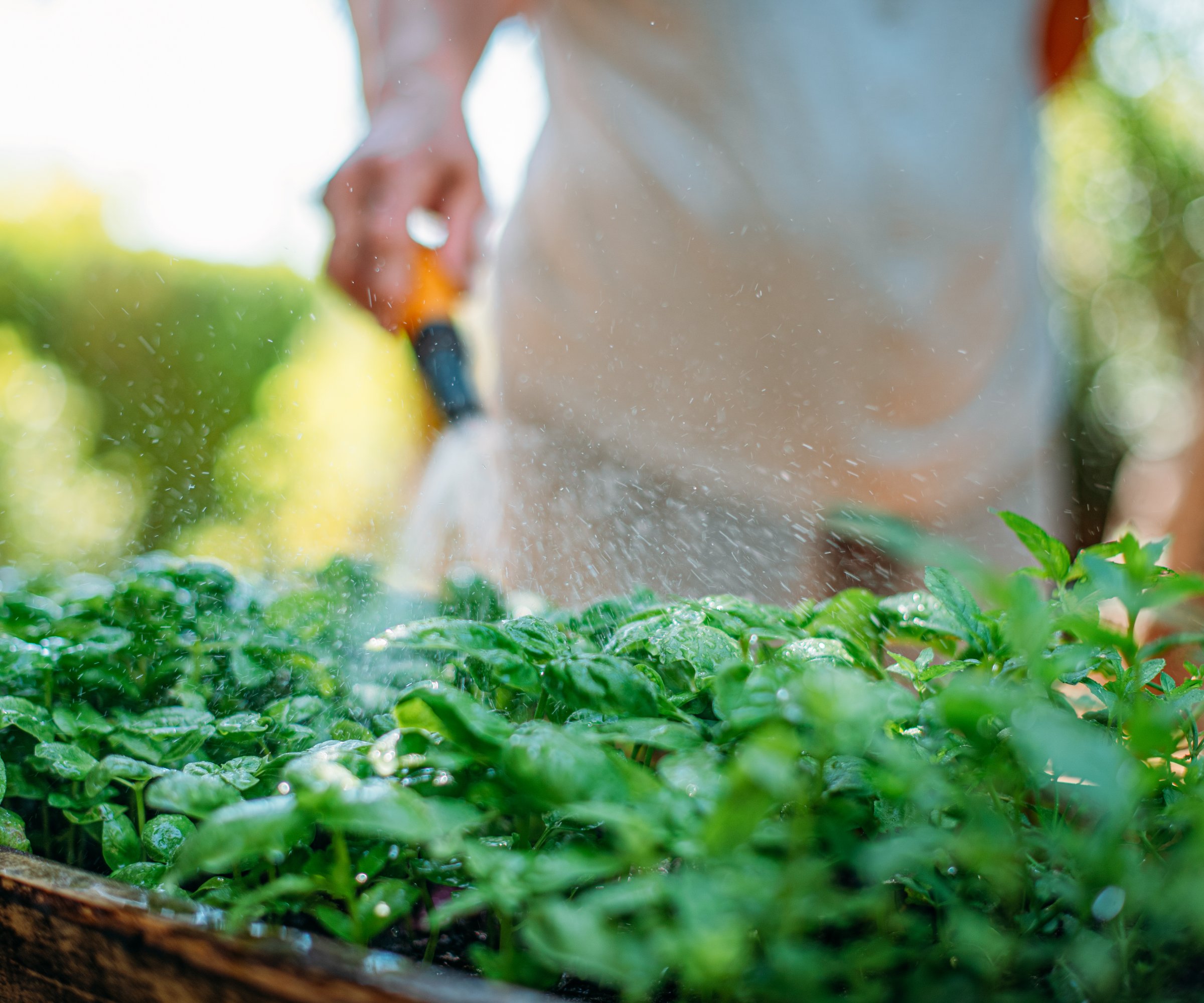
Well drained soil is needed for growing basil. The plant should not sit in boggy soil but it does require regular watering. Keep the soil evenly moist and water when the surface of the soil is dry to the touch. On average the plant will need 1 inch ( 2.54 cm.) of water per week. Water basil at the base of the plant to avoid wet leaves that can lead to fungal disease. A soaker hose or drip system is ideal. Spread mulch around the root zone to prevent mud splash on the leaves and keep the soil cool and moist.
Temperature & Humidity
Basil plants are not at all frost hardy so wait until you are sure there will be no icy nights. Basil will actively grow at 50 degrees Fahrenheit ( 10 C.). Once temperatures approach 80-90 F. ( 26-32 C.) the plants will really take off. The optimum temperature for basil germination is 75-85 F. ( 24-29 C.). High humidity can cause a variety of fungal leaf diseases like gray mold or downy mildew. Humidity levels should be around 70-85. Space the plants well so they have plenty of air flow around them.
Soil
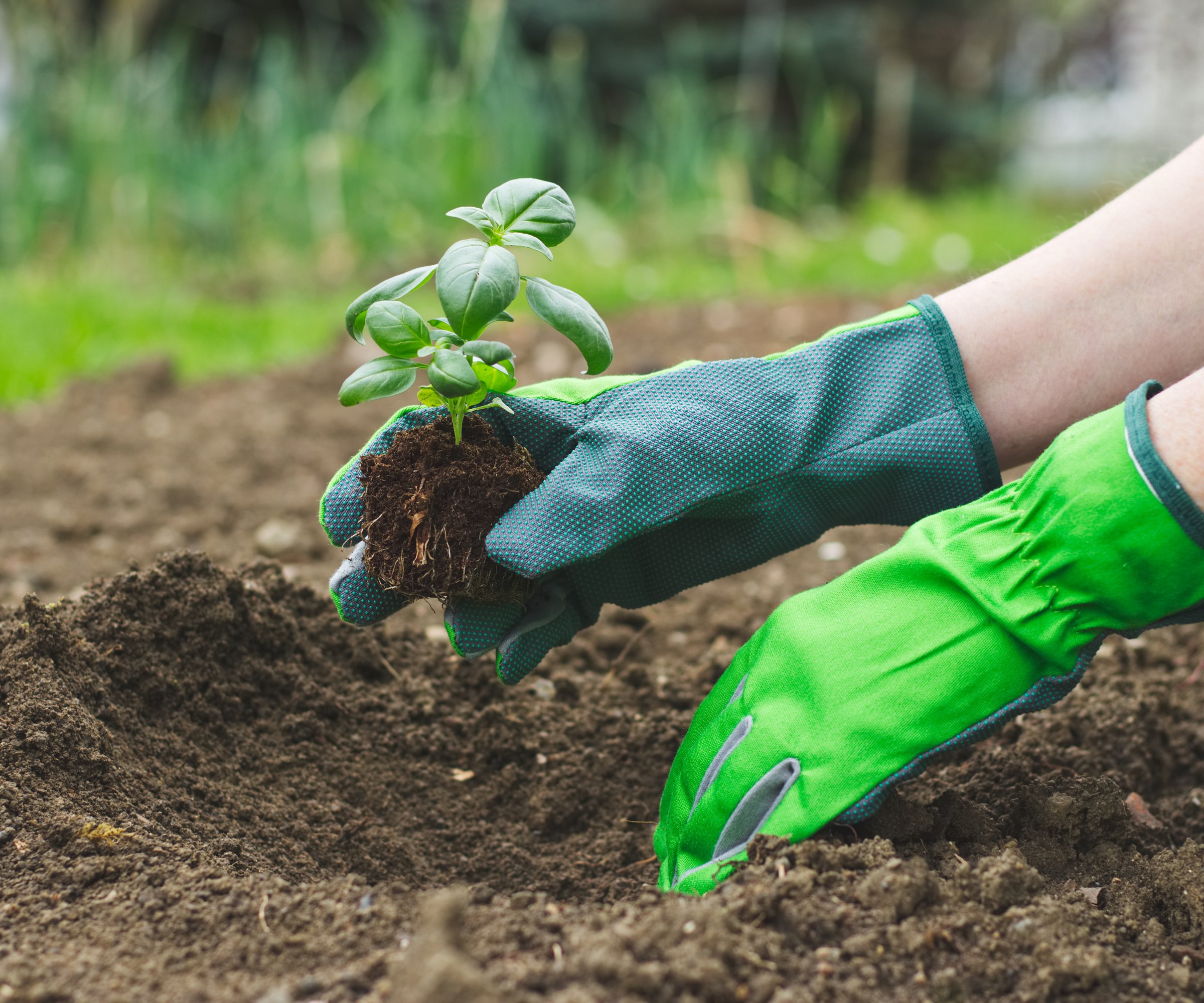
Good percolation is key when growing basil plants. Basil prefers rich soil. Mix in compost or manure into the soil before planting. The herb needs a soil pH of 6.0-6.5. Test the soil and mix in lime in fall if your soil tends to be acidic. If you do not perform a soil test, mix in a fertilizer of 5-10-10 into the soil prior to planting. Basil benefits from growing in a raised bed which will allow you to control moisture retention and soil composition.
Fertilizer
It's a good idea to fertilize basil plants. Approximately 2 months after the plant has gone into the ground, spread calcium nitrate over the soil. Container grown basil plants should receive a liquid fertilizer diluted by half every 3-4 weeks.
Sign up for the Gardening Know How newsletter today and receive a free copy of our e-book "How to Grow Delicious Tomatoes".
Problems, Pests, & Diseases
Always be on the lookout for basil disease and other problems. Fusarium wilt is a common soil borne fungus that will cause the plant to pale and wilt. Other diseases may be gray mold, leaf spot, bacterial wilt, downy mildew, and root rots. The most common pests are slugs and snails, aphids, and Japanese beetles. Use diatomaceous earth to repel slugs and snails, and an organic soap spray for the aphids. Japanese beetles can be hand picked from the foliage and destroyed.
Pruning
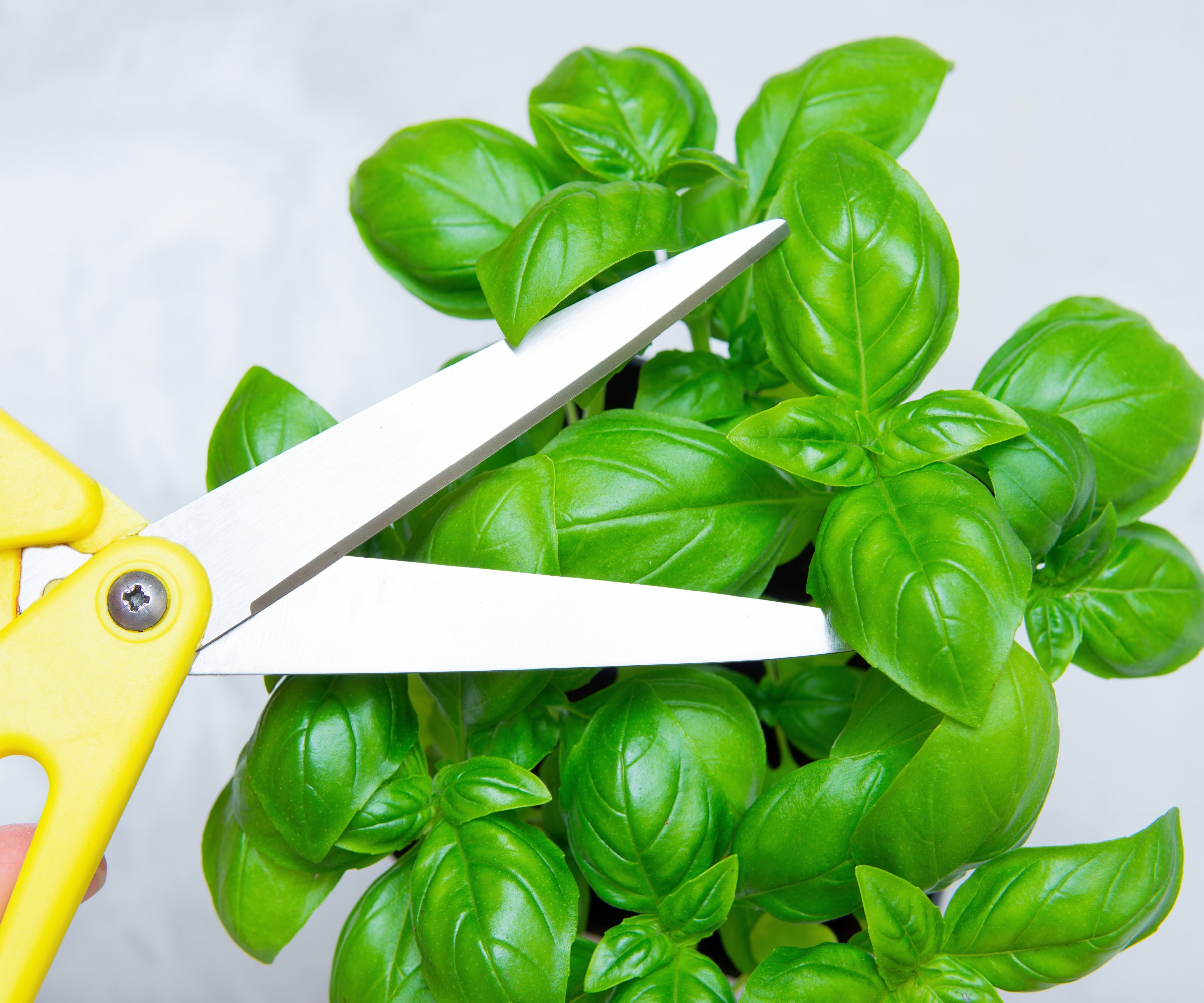
It's best practice to prune basil throughout the growing season. Pinching the terminal shoots when the basil plant is fairly young will encourage branching. Pinch off flower buds as they appear. If these are allowed to bloom the plant will get woody and bitter tasting. Regular harvesting encourages leaf production.
Propagation
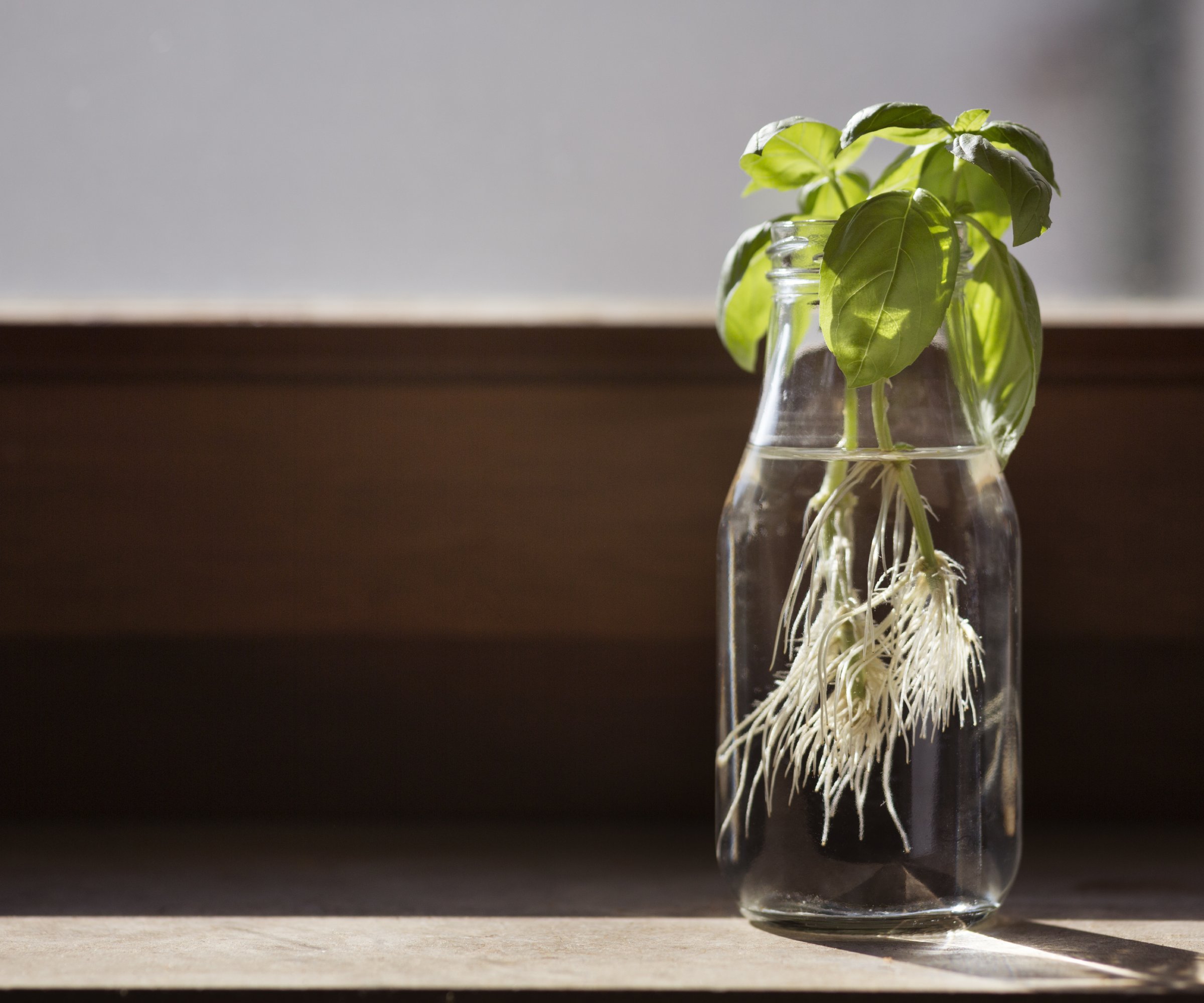
Basil propagation can be achieved with seed, starts, or cuttings. Start basil seeds indoors 4-6 weeks prior to planting outdoors. Plant seed ⅛ inch ( .32 cm.) deep and water lightly. Expect germination in 3-4 weeks. Thin the plants to 3 inches ( 7.62 cm.) apart. Starts should not go outdoors until daytime temperatures are 70 F ( 21 C.) during the day and above 50 F ( 10 C. ) at night. Harden off the plants by gradually setting them outdoors for longer periods over a few days.
Cuttings should be stripped of their lower leaves. Place the cut end in a glass of water. Change the water daily. In a couple of weeks the plant will develop roots and is ready to plant.
How to Grow Basil Indoors
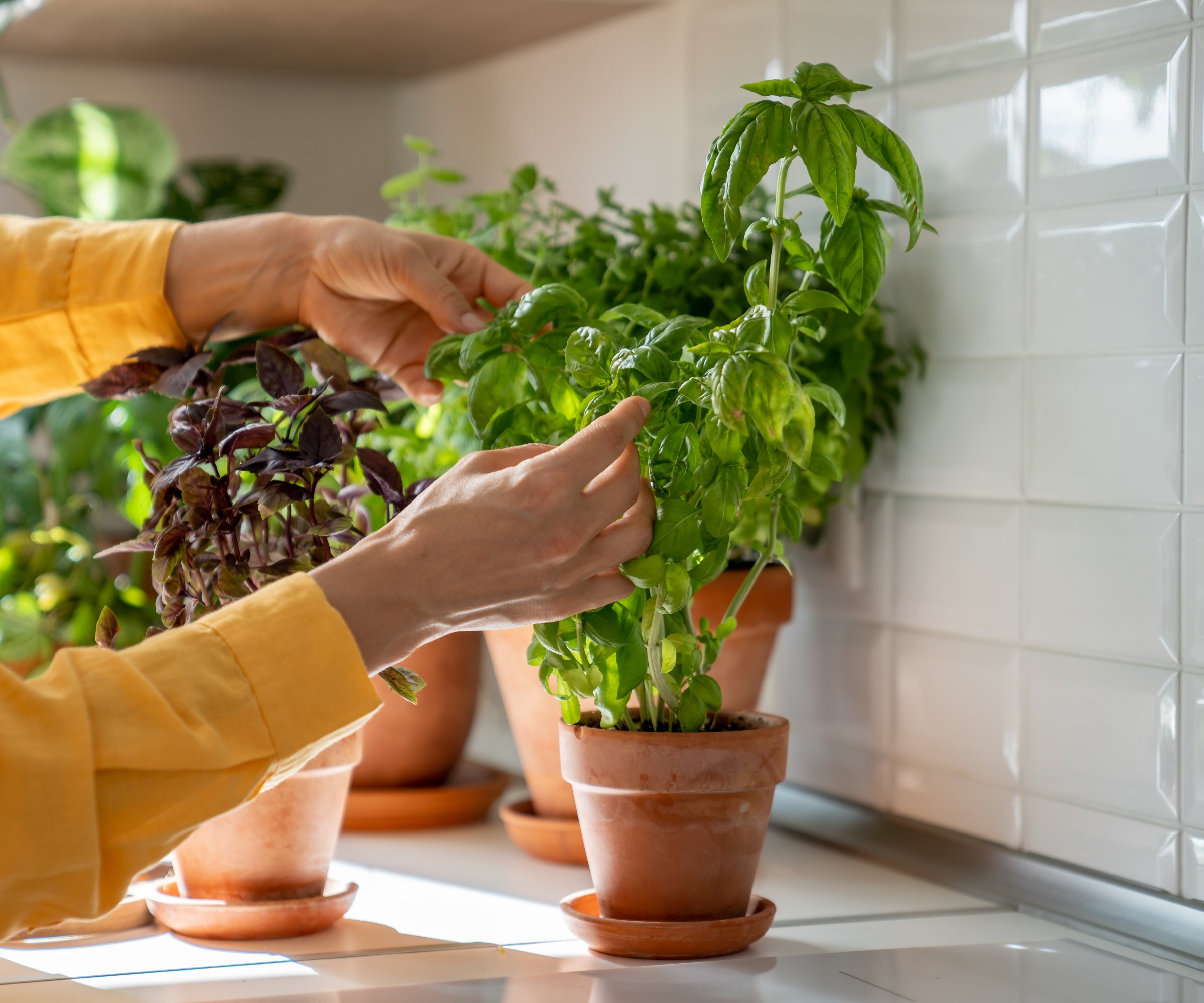
If you're growing basil indoors, place the container in a southern or western window. Lower light levels such as those in fall and winter will signal to the plant it is time to stop growing. To solve this, use an artificial plant light set for at least 10 hours per day. Keep the soil moderately moist and feed every month with a diluted by half house plant food.
Harvesting & Storing Basil
Harvest basil frequently. Take mature leaves at any time, leaving the small ones to finish growing. Large basil plants may be harvested by pinching off a stem. Place this in a glass of water to store. Basil is very sensitive to bruising and will blacken if you are not gentle when handling the leaves. You may also store leaves in a moistened kitchen towel in the vegetable crisper for 2 days. If you want to keep it long-term, you can dry basil and store it in an airtight container.
Varieties

Probably our most common variety is sweet basil such as Genovese. These are larger leaves but there are also dwarf plants. Scented leaf and purple leaf are some other basil varieties.
- Thai basil - Slight spiciness and more shade tolerance than others.
- Lemon basil - A decided citrus scent in the leaves.
- Pesto Perpetuo - A variegated white and green variety.
- Dark Opal Purple - Purple leaves with classic basil flavor.
- Greek Column Lesbos - A huge 3 foot ( 0.9 m) tall plant.
- Marseillaise Dwarf - A French variety with outstanding flavor.
Frequently Asked Questions
Does basil need sun or shade to grow?
Most basil plants need sun for best growth but they can tolerate afternoon shade.
Will basil regrow after cutting?
Basil will keep producing leaves after harvesting stems or leaves. Never harvest more than ⅓ of the leaves. If you remove a stem it will form roots and grow a new plant.

Bonnie Grant is a professional landscaper with a Certification in Urban Gardening. She has been gardening and writing for 15 years. A former professional chef, she has a passion for edible landscaping.
- Liz BaesslerSenior Editor
- Amy DraissDigital Community Manager
